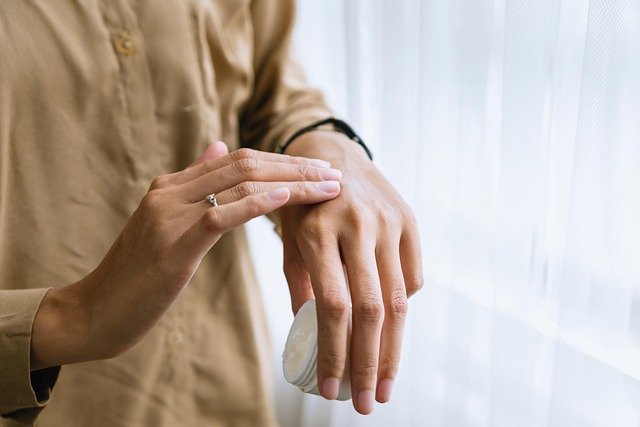Bikini Area Laser Hair Removal: Trends 2025
The landscape of bikini area grooming is experiencing a significant transformation as laser hair removal technology advances and consumer preferences evolve. Modern laser treatments are becoming increasingly sophisticated, offering safer and more effective solutions for sensitive skin areas while aligning with changing attitudes toward body care and personal choice.

How Bikini Area Laser Treatments Are Reshaping Grooming Habits
Traditional grooming methods like shaving and waxing are gradually giving way to laser treatments as people seek more permanent solutions. The convenience factor plays a major role in this shift, as laser treatments eliminate the need for frequent maintenance appointments or daily shaving routines. Many individuals report that laser hair removal has simplified their grooming regimen, allowing them to focus on other aspects of self-care.
The precision of modern laser technology enables targeted treatment of specific areas, giving clients greater control over their desired aesthetic outcomes. This level of customization was difficult to achieve with conventional methods, making laser treatments increasingly attractive to those seeking personalized grooming solutions.
The Impact of Modern Laser Tech on Sensitive Skin Areas
Recent technological advances have addressed many concerns about treating sensitive areas like the bikini region. Newer laser systems incorporate cooling mechanisms and adjustable intensity settings that significantly reduce discomfort during treatment sessions. These improvements have made the procedure more accessible to individuals with sensitive skin who previously avoided laser treatments.
Advanced wavelength technology now allows practitioners to target hair follicles more effectively while minimizing damage to surrounding skin tissue. This precision has reduced side effects such as irritation, hyperpigmentation, and ingrown hairs that were more common with earlier laser systems. The development of lasers suitable for all skin tones has also expanded accessibility across diverse populations.
Why Laser Is Gaining Trust as a Reliable Alternative to Waxing
The reliability of laser hair removal has improved dramatically with technological refinements and standardized treatment protocols. Unlike waxing, which provides temporary results and can cause skin trauma, laser treatments offer progressive hair reduction that becomes more apparent with each session. This predictable outcome has built consumer confidence in the procedure.
Safety profiles have also enhanced laser’s reputation as a trustworthy alternative. Professional training standards for laser technicians have become more rigorous, ensuring consistent and safe treatment delivery. The reduced risk of infections, chemical reactions, and physical trauma associated with laser treatments compared to waxing has contributed to growing acceptance among healthcare professionals and consumers alike.
Trends in Clinics Offering Personalized Bikini Area Treatments
Medical spas and specialized clinics are developing more individualized treatment approaches for bikini area laser hair removal. These facilities now offer detailed consultations that consider factors such as hair type, skin sensitivity, lifestyle preferences, and desired outcomes. Treatment plans are customized based on these assessments, moving away from one-size-fits-all approaches.
The emergence of specialized packages and flexible scheduling options reflects the industry’s response to diverse client needs. Some clinics now offer graduated treatment intensities, allowing clients to start with conservative settings and adjust based on their comfort levels and results. Privacy enhancements and specialized treatment rooms designed specifically for intimate area procedures have also become standard offerings.
| Provider Type | Treatment Options | Average Session Cost | Key Features |
|---|---|---|---|
| Medical Spas | Full bikini packages | $150-$300 | Customized intensity, cooling systems |
| Dermatology Clinics | Targeted area treatments | $200-$400 | Medical supervision, advanced lasers |
| Specialized Laser Centers | Comprehensive packages | $125-$275 | Flexible scheduling, payment plans |
Prices, rates, or cost estimates mentioned in this article are based on the latest available information but may change over time. Independent research is advised before making financial decisions.
The Link Between Body Positivity and Bikini Area Laser Removal
The body positivity movement has influenced how laser hair removal is positioned and perceived in the beauty industry. Rather than promoting unrealistic beauty standards, many practitioners now emphasize personal choice and individual comfort as primary motivations for treatment. This shift has created a more inclusive environment where clients feel supported in making decisions based on their own preferences rather than societal pressures.
Educational approaches have replaced marketing tactics that previously emphasized shame or inadequacy about natural body hair. Modern clinics focus on providing information about options and outcomes, allowing individuals to make informed decisions that align with their personal values and comfort levels. This evolution has contributed to reduced stigma around both choosing laser treatment and opting to maintain natural body hair.
The integration of body positivity principles has also led to more diverse representation in marketing materials and educational content. Clinics increasingly showcase various body types and treatment outcomes, helping potential clients set realistic expectations and feel more comfortable with their choices.
Bikini area laser hair removal continues to evolve as technology improves and cultural attitudes shift toward greater acceptance of personal grooming choices. The combination of enhanced safety, improved effectiveness, and personalized treatment approaches positions laser hair removal as a viable long-term solution for those seeking alternatives to traditional grooming methods. As the industry matures, the focus on individual preferences and comfort over universal beauty standards creates a more supportive environment for informed decision-making.
This article is for informational purposes only and should not be considered medical advice. Please consult a qualified healthcare professional for personalized guidance and treatment.




